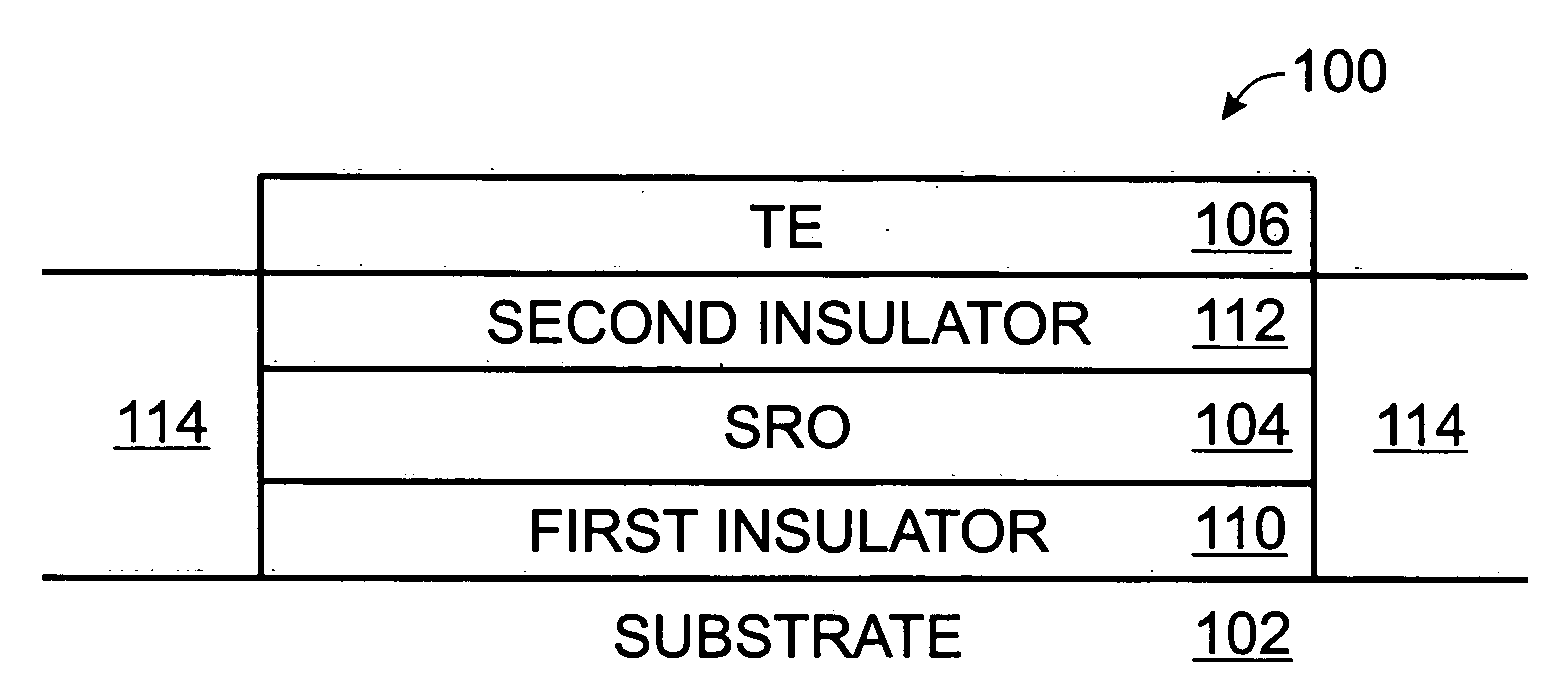High-luminescence silicon electroluminescence device
a high-luminescence, silicon electroluminescence technology, applied in the direction of semiconductor/solid-state device details, final product manufacturing, coatings, etc., can solve the problems of bulk silicon being a highly inefficient light emitter, unsuitable for optoelectronic applications, and poor light generation efficiency, etc., to achieve the effect of increasing the refractive index of the sro film
- Summary
- Abstract
- Description
- Claims
- Application Information
AI Technical Summary
Benefits of technology
Problems solved by technology
Method used
Image
Examples
Embodiment Construction
[0035]FIG. 1 is a partial cross-sectional view of a high-luminescence silicon (Si) electroluminescence (EL) device. In its simplest form, the EL device 100 comprises a substrate 102 and a silicon-rich oxide (SRO) film 104 overlying the substrate 102. The SRO film 104 has a refractive index in the range of 1.5 to 2.1, and a porosity in the range of 5 to 20%. A top electrode (TE) 106 overlies the SRO film 104. The index of refraction relates to the bending of light as it passes through a transparent or semi-transparent medium. Alternately stated, the index of refraction is a ratio, representing the difference in the propagation of light through a particular medium, as opposed to air. Porosity is the proportion of the non-solid volume to the total volume of material, and is defined by the ratio: ϕ=VpVm
[0036] where Vp is the non-solid volume (pores) and Vm is the total volume of material, including the solid and non-solid parts. It is common to express porosity as a percentage.
[0037]F...
PUM
| Property | Measurement | Unit |
|---|---|---|
| porosity | aaaaa | aaaaa |
| refractive index | aaaaa | aaaaa |
| thickness | aaaaa | aaaaa |
Abstract
Description
Claims
Application Information
 Login to View More
Login to View More - R&D
- Intellectual Property
- Life Sciences
- Materials
- Tech Scout
- Unparalleled Data Quality
- Higher Quality Content
- 60% Fewer Hallucinations
Browse by: Latest US Patents, China's latest patents, Technical Efficacy Thesaurus, Application Domain, Technology Topic, Popular Technical Reports.
© 2025 PatSnap. All rights reserved.Legal|Privacy policy|Modern Slavery Act Transparency Statement|Sitemap|About US| Contact US: help@patsnap.com



